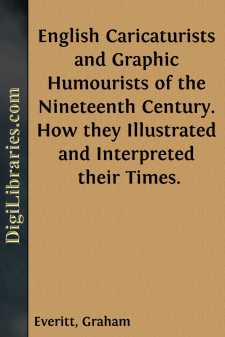Categories
- Antiques & Collectibles 13
- Architecture 36
- Art 48
- Bibles 22
- Biography & Autobiography 813
- Body, Mind & Spirit 142
- Business & Economics 28
- Children's Books 17
- Children's Fiction 14
- Computers 4
- Cooking 94
- Crafts & Hobbies 4
- Drama 346
- Education 46
- Family & Relationships 57
- Fiction 11829
- Games 19
- Gardening 17
- Health & Fitness 34
- History 1377
- House & Home 1
- Humor 147
- Juvenile Fiction 1873
- Juvenile Nonfiction 202
- Language Arts & Disciplines 88
- Law 16
- Literary Collections 686
- Literary Criticism 179
- Mathematics 13
- Medical 41
- Music 40
- Nature 179
- Non-Classifiable 1768
- Performing Arts 7
- Periodicals 1453
- Philosophy 64
- Photography 2
- Poetry 896
- Political Science 203
- Psychology 42
- Reference 154
- Religion 513
- Science 126
- Self-Help 84
- Social Science 81
- Sports & Recreation 34
- Study Aids 3
- Technology & Engineering 59
- Transportation 23
- Travel 463
- True Crime 29
English Caricaturists and Graphic Humourists of the Nineteenth Century. How they Illustrated and Interpreted their Times.
by: Graham Everitt
Description:
Excerpt
PREFACE.
The only works which, so far as I know, profess to deal with English caricaturists and comic artists of the nineteenth century are two in number. The first is a work by the late Robert William Buss, embodying the substance of certain lectures delivered by the accomplished author many years ago. Mr. Buss’s book, which was published for private circulation only, deals more especially with the work of James Gillray, his predecessors and contemporaries, treating only briefly and incidentally of a few of his successors of our own day. The second is a work by Mr. James Parton, an American author, whose book (published by Harper Brothers, of New York) treats of “Caricature, and other Comic Art in all Times and many Lands.” It is obviously no part of my duty (even if I felt disposed to do so) to criticise the work of a brother scribe, and that scribe an American gentleman. Covering an area so boundless in extent, it is scarcely surprising that Mr. Parton should devote only thirty of his pages to the consideration of English caricaturists and graphic humourists of the nineteenth century.
Under these circumstances, it would seem to me that, in placing the present work before the public, an apology will scarcely be considered necessary.
Depending oftentimes for effect upon overdrawing, nearly always upon a graphic power entirely out of the range of ordinary art, the work of the caricaturist is not to be measured by the ordinary standard of artistic excellence, but rather by the light which it throws upon popular opinion or popular prejudice, in relation to the events, the remembrance of which it perpetuates and chronicles. While, however, a latitude is allowed to the caricaturist which would be inconsistent with the principles by which the practice of art is ordinarily governed, it may at the same time be safely laid down that it is essential to the success of the comic designer as well as the caricaturist, that both should be artists of ability, though not necessarily men of absolute genius.
It may be contended that Gillray, Rowlandson, Bunbury, and others, although commencing work before, are really quite as much nineteenth century graphic satirists as their successors. This I admit; but inasmuch as their work has been already described by other writers, and the present book concerns itself especially with those whose labours commenced after 1800, I have endeavoured to connect them with those of their predecessors and contemporaries, without unnecessarily entering into detail with which the reader is supposed to be already more or less familiar.
I am in hopes that the character in which I am enabled to present George Cruikshank as the leading caricaturist of the century; the account I have given of his hitherto almost unknown work of this character; together with the view I have taken of the causes which led to his sudden and unexampled declension in the very midst of an artistic success almost unprecedented, may prove both new and interesting to some of my readers.
I have to acknowledge the assistance I have derived from the 1864 and 1867 MS....


